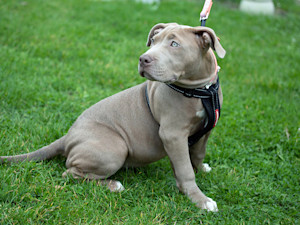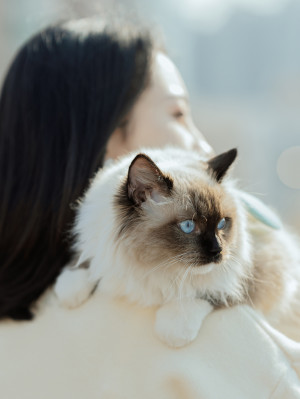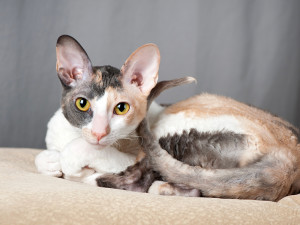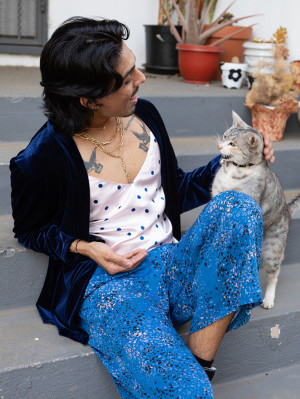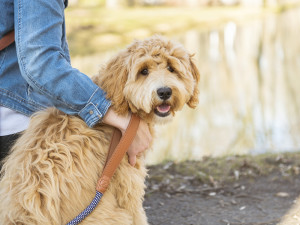‘XL Bully Cat’ Breed Trend Sparks Outrage As Experts Warn of Severe Health Risks
Experts say this AI-like breeding trend is susceptible to serious health issues
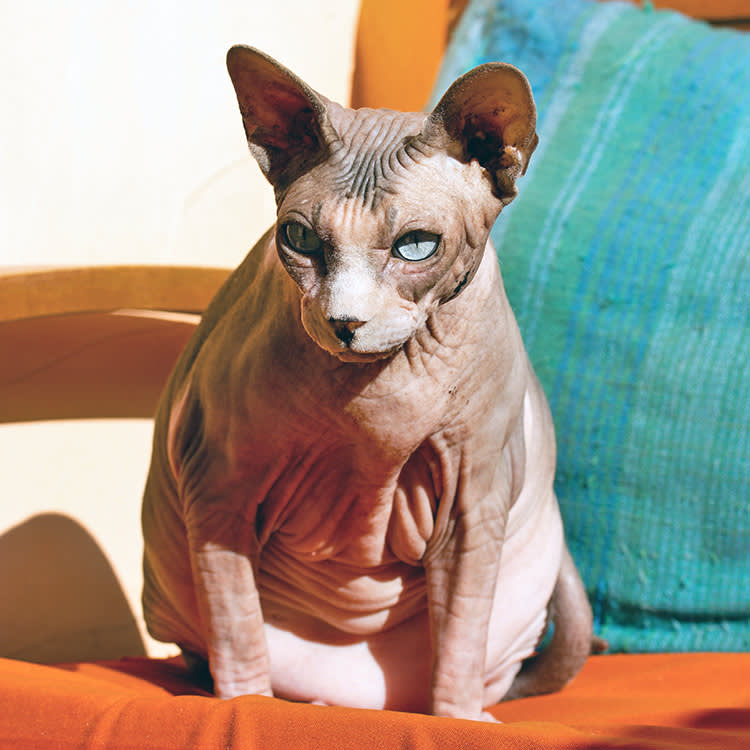
Share Article
A new cat breeding trend known as ‘XL Bully cats’ has caused alarm among animal welfare experts and is gaining more and more traction in the UK. The trending cat breed, which mirrors the now-banned XL Bully dog breed, prioritises aesthetics over the wellbeing of the animals. The cats, often hairless with shortened legs, are engineered to look robust and muscular, but experts warn this comes at a severe cost to their health.
“Our veterinary assessments of the photos and videos we have seen online of these cats have raised serious welfare concerns,” Allison Richards, head of clinical services for Cats Protection told The Mirroropens in new tab.
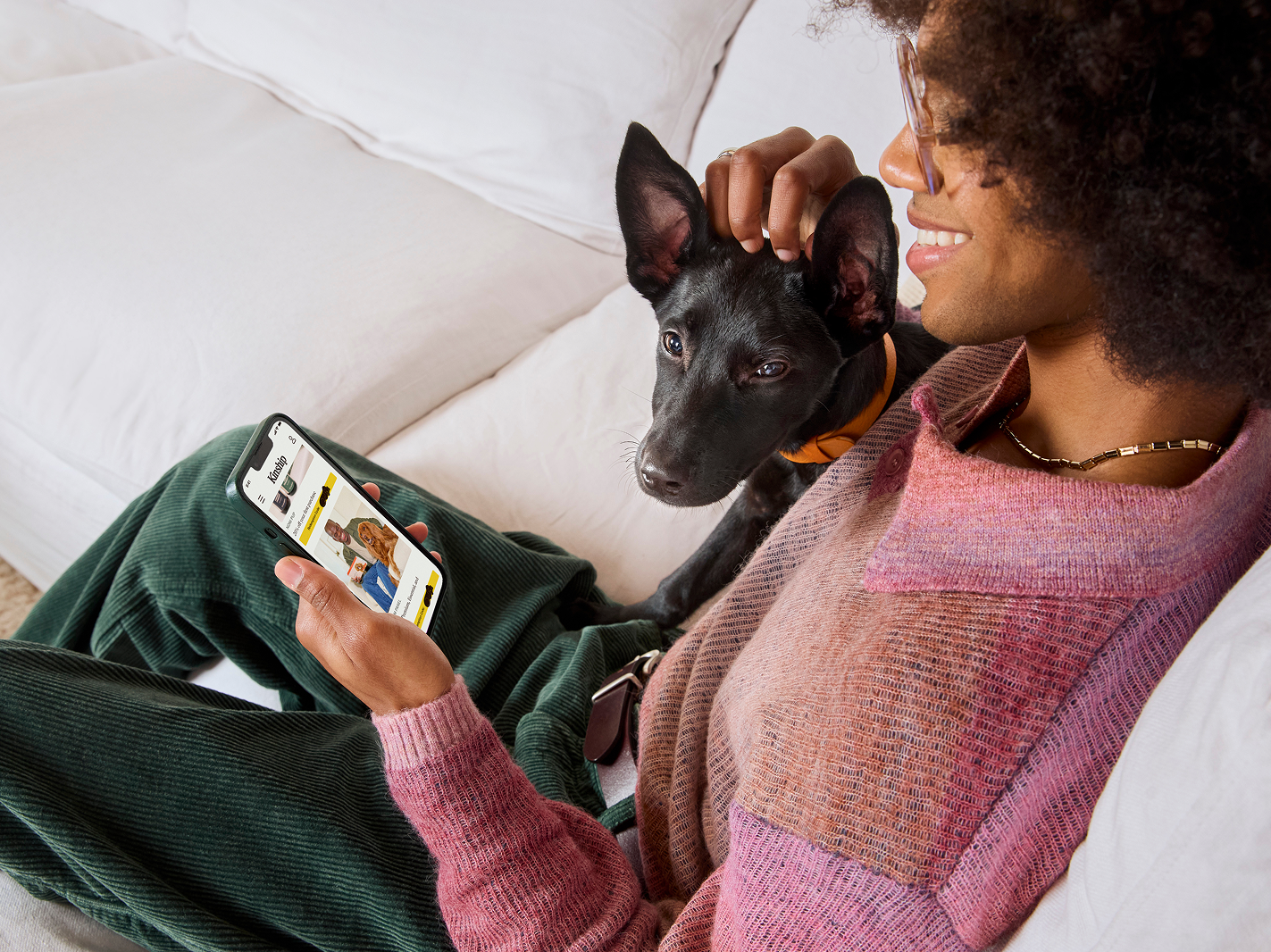
Get (totally free) deals for food, treats, accessories, tech and way more pet parenting must-haves.
These Bully cats are being bred specifically for their exaggerated muscular features, reminiscent of their canine counterparts. The result? Cats with thick necks, broad shoulders and no fur that look more like an AI-generated image than a real-life feline. However, the trend is very real – and growing – with experts and animal welfare groups raising the alarm and citing significant health concerns.
“Sadly, we think they are genuine,” a spokesperson from Naturewatch Foundationopens in new tab, an animal welfare organisation, told us about some of the images on social media. “We’re not clear if some of the images have been enhanced, but these poor cats certainly are being bred in real life. It really is very concerning.”
The development of XL Bully cats is primarily driven by social media, where exaggerated features such as hairlessness, combined with stocky, low-to-the-ground bodies, have gained a following. These cats are typically a cross between Sphynx and Munchkin breeds, which are selectively bred for specific physical traits. Animal rights advocates argue this selective breeding, motivated by social media trends, actually subjects the cats to lifelong health complications. Behind the glamorous filters and catchy captions lies a reality of constant (and very expensive) veterinary care, pain and often premature death for these animals.
Bully cats follow a trend for hairless cats of late, such as the ‘Dwelf’ cat – named for being small (dwarf) and elf-like (hence, Dw-elf) – which are a mix of Munchkin, Sphynx and American Curl, which gives them the ‘elf-like’ look, but have slightly less wrinkly skin than Bully cats, according to a spokesperson from Naturewatch Foundation.
Both Bully cats and Dwelf cats face similar health issues to both the Sphynx and Munchkin breeds but on an amplified scale. Due to their lack of fur, these cats struggle with temperature regulation, which increases their vulnerability to respiratory issues. Without natural protection from the sun, they are also more susceptible to sunburn and skin cancers.
Dr Grace Carroll, an animal welfare expert from Queen’s University Belfast, emphasises that Bully Cats’ health challengesopens in new tab are likely to be twice as severe as those in other breeds due to the combined traits of hairlessness and short legs. “Bully cats’ exaggerated features create significant barriers to their health, including respiratory, skin and joint issues,” says Dr Carroll.
The Bully cat is the feline equivalent of the same breeding trend in ‘Bully’ type dogs. Heavily muscled, short-legged and often plagued with health problems, these cats are bred to have exaggerated physical features, such as bowed legs, squashed faces and sagging skin. The trend is particularly alarming as it deliberately selects for mutations that are not only unnatural for cats but also downright harmful to the animal’s well-being.
Animal welfare organisations, including the RSPCA, have already issued advisories warning potential pet owners to avoid purchasing these cats. While some breeders argue that their Bully cats are ‘health tested’, veterinary professionals remain unconvinced, noting that these assurances often overlook the high likelihood of skin infections and joint problems in such breeds. Social media platforms are also under scrutiny for promoting these breeds without adequate information on the associated health risks.
“We understand that their emerging presence on social media may fuel a demand for these kinds of cats but we would urge fellow cat lovers to consider adopting the many rescue cats in our care instead of buying from a breeder. We would also urge breeders to prioritise the health and welfare of any animal over the way they look.”
The Naturewatch Foundationopens in new tab has voiced its outrage over the trend, which they believe has increased in popularity in the UK after coming over from the US. A spokesperson for the foundation expressed deep concern, stating, “It’s shocking to see that these poor cats are starting to emerge in the UK. We’ve seen increasingly extreme breeding practices in the dog world in recent years, and it appears unscrupulous people are now turning their attention to exploiting cats in the same way, all in the pursuit of greed and social media likes. It’s an animal welfare disaster, and this kind of breeding is just cruel.”
These Bully cats are not bred for health or temperament but for their unique appearance, with misguided individuals preferring an ‘aesthetically pleasing’ breed rather than thinking about the cat’s well-being. Like the overbred dogs before them, these cats are likely to endure a lifetime of suffering, with serious health problems that often start from birth and continue throughout their shortened lives.
Dr Dan O’Neill, an associate professor of Companion Animal Epidemiology at the Royal Veterinary College (RVC), has spent years studying the impact of extreme breeding on dogs and is now turning his attention to cats. His research paints a grim picture of what the future holds for these cats.
“The RVC has generated volumes of research over the past decade showing the enormous suffering that humans have imposed on dogs because of our fascination with extreme body shapes,” explains Dr O’Neill. “It is heartbreaking to now see the same suffering being visited on cats by the invention of the XL Bully cat.”
The statistics are distressing, too. According to Dr O’Neill, Bully cats are likely to suffer the same shortened lives as Sphynx cats, a breed with a similarly fraught health history. A recent RVC VetCompass paperopens in new tab reported that Sphynx cats live an average of just 6.8 years compared to the 11.7 years that most cats enjoy. The discrepancy is largely due to the breed’s predisposition to health problems, many of which are directly related to the very traits they are bred for – hairlessness, in particular, which can lead to severe sunburns, skin infections and even skin cancer.
It’s not just the physical health risks that are worrying experts. The behavioural impact on these cats, who may struggle to perform basic feline activities such as jumping or grooming themselves, is also a serious concern.
The Naturewatch Foundation believes the increasing number of Bully cats in the UK is a result of the declining Bully dog market in the UK; breeders who previously made money breeding ‘extreme’ dogs are now turning their attention to cats. “There is also less legal protection for catsopens in new tab used for breeding compared with dogs in much of the UK, so cats are sadly really vulnerable to exploitative breeding,” a spokesperson for the charity told us.
As a result, the Naturewatch Foundation is calling on the UK, Welsh and Northern Irish governments to follow in the footsteps of the Scottish government in regulating cat breedingopens in new tab, and “ban the breeding of cats with extreme traits that could cause health and welfare issues for them and their kittens”.
What’s particularly frustrating about this trend is that it’s completely avoidable. Unlike certain genetic conditions that can arise in any cat breed, the health problems associated with Bullycats are entirely man-made. This makes it not just an ethical issue but a moral one – to knowingly breed an animal that is destined for a life of pain and suffering is, quite frankly, inexcusable.
The RSPCA told us that they love all cats but are “very concerned” over the XL Bully cat trend, citing the health issues raised by the RVC and Naturewatch Foundation but adding, “These Sphynx-like cats are also bred to have only a fine covering of downy hair and some may not have eyelashes or whiskers,” they warn. “This lack of fur can leave cats vulnerable to harmful ultraviolet light, cause difficulties keeping warm and means they won’t be able to use their hair and possibly their whiskers to explore their environment.” The lack of a fur coat also means Bully cats will need to be regularly washed as oil can accumulate on their skin.
There’s a growing call among animal welfare organisations and veterinary professionals for stricter regulations around cat breeding practices in the UK. In the meantime, it’s up to potential pet parents to make informed choices. “If you’re thinking about getting a cat, don’t buy into these harmful designer fads, as you’ll pay a high price in vet fees and you’ll have to endure the pain of seeing your beloved pet suffering from lifelong health issues,” warns the Naturewatch Foundation.
“The advice to anyone thinking of acquiring a cat or a dog is to always put the welfare of the animal first and to stop and think before acquiring an animal with an extreme and unnatural body shape that does not exist commonly in nature,” adds Dr O’Neill.
For those considering a cat, experts encourage potential pet parents to research breeds thoroughly, opting for health and temperament over trends and breeds created solely for aesthetic purposes. Adopting from rescue centres, where many cats in need of homes are already waiting, is a positive alternative.
As the outrage over Bully cats continues to grow, one can only hope that this trend is a fleeting one, serving as a reminder of the ethical implications behind selective breeding for physical extremes.
Kinship has reached out to the social media breeder accounts featuring the pictures of XL Bully cats in this article but has not heard back.
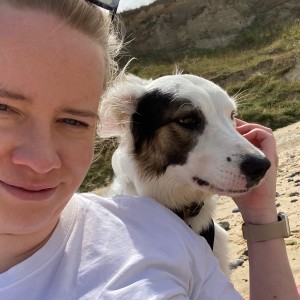
Orla Pentelow
Orla Pentelow is Kinship UK’s Senior Editor. She has previously written for British Vogue, Bustle, Yahoo and The Telegraph. When not at her desk liking dog videos she’s out and about with her rescue pup, Luna, who works primarily as chief distractor.
Related articles
![Dark-haired woman holding her ragdoll cat]()
7 Purebred Cat Breeds Likely to Suffer from Genetic Disorders
And why this means adopting a cat from a rescue centre could be a better choice
![Cornish Rex cat laying down on a pillow]()
The Cat Breed-Behaviour Connection
Which cats are more likely to have stranger danger? Bite the hand that feeds them? Get the zoomies? Scientists studied 5,700 pet cats and discovered some interesting traits
![Happy stylish latino queer person looking comfortable on porch steps with gray cat.]()
Cats Lifespan: How Long Do Cats Live?
They are the absolute light of your life. Here’s how you can help them live as close to forever as possible
![designer dog breed Labradoodle on a leash looking at the camera]()
From Goldendoodles to Puggles – the Truth About ‘Designer Dogs’
Do your research. Know your facts
